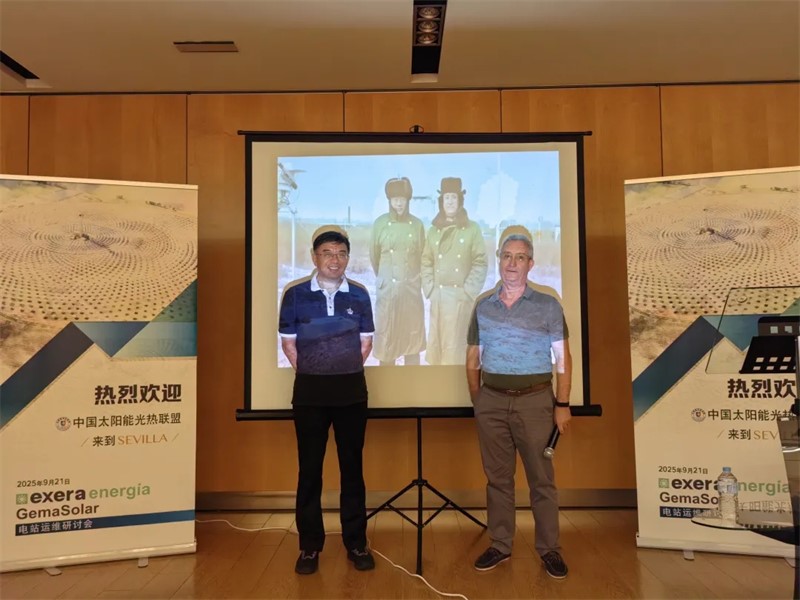By Wang Zhifeng
Under the autumn sun of Seville, I met an old friend of twenty years—Dr. Manuel Romero. He is still the gentle scholar I remember: silver threading his hair, yet the eyes behind his glasses sparkle as brightly as ever. As the founding director of Spain's Plataforma Solar de Almería (PSA), he was the first Spaniard I ever knew and the first mentor who led me into the world of CSP.

Figure: My friend surprised me with a photo taken in Yanqing, Beijing more than a decade ago—at a time when China did not own a single heliostat.
In early autumn 2006, I travelled with Director Li and Director Zhou of the Ministry of Science and Technology to visit PSA. CSP was still in its infancy in China, whereas PSA was already Europe's most important solar-thermal research centre. To welcome us, Dr Romero came expressly from Madrid and personally guided the tour. Standing in front of a glittering heliostat field, he patiently explained how each mirror is angled, how every sun-ray is focused onto the receiver atop the tower, and how light reaches the parabolic-trough vacuum tubes. For the first time I realised that solar energy is not only rooftop PV panels and water heaters—it can be magnificent and speak precisely with industry.
He spoke unhurriedly, yet with passion: “Solar energy is more than power; it is a responsibility, a gift we leave to the next generation.” I remember him gently stroking a prototype receiver as if it were a work of art. The sun was scorching that day, but his words burned hotter, igniting in us a longing for CSP.
Over the years we stayed in touch. Whenever a new CSP project was commissioned in China, he would send congratulations; whenever his institute, IMDEA Energy, produced new results, he shared them at once. We have sat side-by-side at international conferences, toasted each other in a small Madrid bar, and gathered in my Beijing home. He taught me to savour the body of a Rioja and told me that fine wine should never exceed 16 % alcohol—explaining why. Later I noticed that, indeed, no quality wine in the world exceeds that strength. I offered him the elegance of West-Lake Dragon-Well tea. Cultures mingled through exchange; friendship deepened with time.
This reunion in Seville, we strolled along the Guadalquivir River; the autumn wind carried the lingering scent of orange blossom. “Look,” he said, “this city has Roman ruins, Moorish palaces, and the sunlight we both pursue.” I smiled and nodded, yet my heart rippled. Twenty years—enough for a technology to travel from laboratory to commercialisation, and for two nations to move from strangers to intimacy. Now both our labs are working on solar-fired cement production.
He spoke of future plans: first, a small cottage among olive trees to rest his eyes; then a book chronicling PSA's history, if only to offer young people a little advice. I told him China has built several commercial CSP plants of 50 MW and above, many of whose technical routes drew upon PSA's EuroTrough collectors and heliostat experience. He listened, smiled with relief, the crow's-feet at his eyes like wheat waves under sunlight—warm and deep.
At farewell we embraced. “Friendship is like solar energy,” he said, “quiet, yet enduring.” Watching his receding figure, I answered silently: Yes, this friendship that spans mountains and seas is like the sunlight tracked by heliostats—always pointing to the same direction: humanity's shared longing for a clean future.


